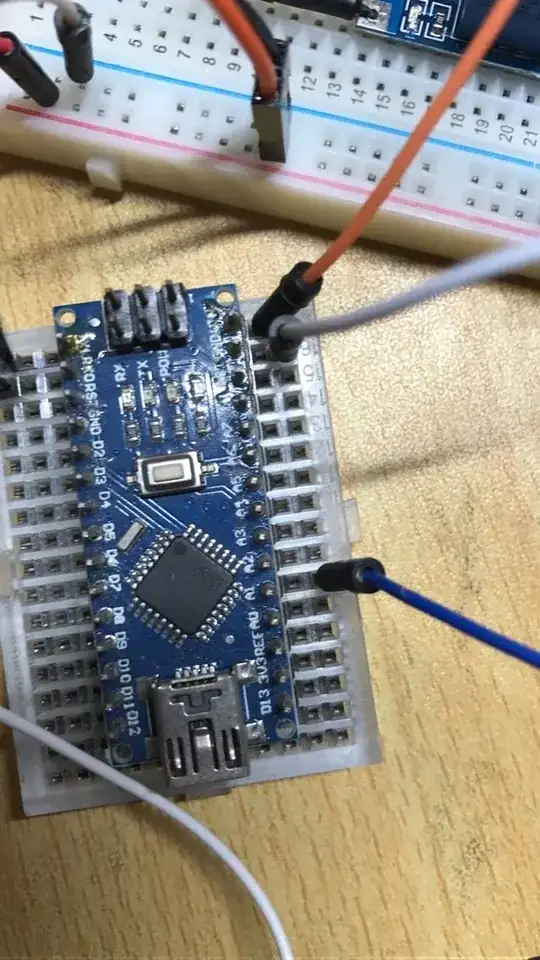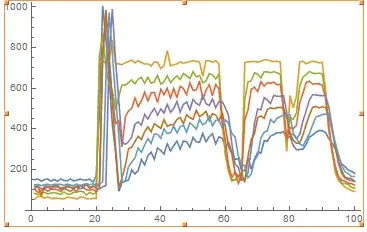I have a sensor and it generates an analogue signal.
I am reading all analogue data and sending it to my computer.
uint8_t sensors[] = { A0,A1,A2,A3,A4,A5,A6 };
const int len = sizeof(sensors) / sizeof(sensors[0]);
void loop(void)
{
for (size_t i = 0; i < len; i++)
{
auto sensor = sensors[i];
int sensorValue = analogRead(sensor);
// Convert the analogue reading (which goes from 0 - 1023) to a voltage (0 - 5V):
float voltage = sensorValue * (5.0 / 1023.0);
char t[100];
sprintf(t, "%d:%d$\n", sensor, sensorValue);
uint8_t t1[100];
//PrintSerial.println(t);
memcpy(t1, t, 100);
wifi.send(t1, strlen(t));
}
delay(300);
}
I plotted the analogue reading. Why does the graph look like this?

